








With the many challenges facing our nation, communities in California and beyond are eager for solutions. YOU are part of the solution. Together, we are not just dreaming of a healthier, more equitable, more climate-resilient future—we are actively building it.
In the Bay Area and in Los Angeles, we are making the most of neglected asphalt-covered schoolyards by transforming them into shaded green spaces for outdoor learning and play while reducing the harmful impacts of extreme heat, and then working to unlock them to neighbors as local parks. In rural areas, guided by their leadership, we are helping Native American tribes reclaim ancestral lands and revitalize selfgovernance, cultural practices, and Indigenous stewardship. From downtown parks to alpine forests, we are harnessing the power of nature to improve climate resilience, and expanding healthy outdoor activities like hiking, biking, and wildlife viewing.
And, by putting community at the center of these efforts, we are cultivating a just and equitable California.
As Trust for Public Land looks to the future, we remain committed to our vision of a world where every person can connect with the outdoors. We sincerely appreciate your steadfast support of TPL. Thank you for partnering with us on this journey.
Guillermo Rodriguez California State Director and Vice President, Pacific Region

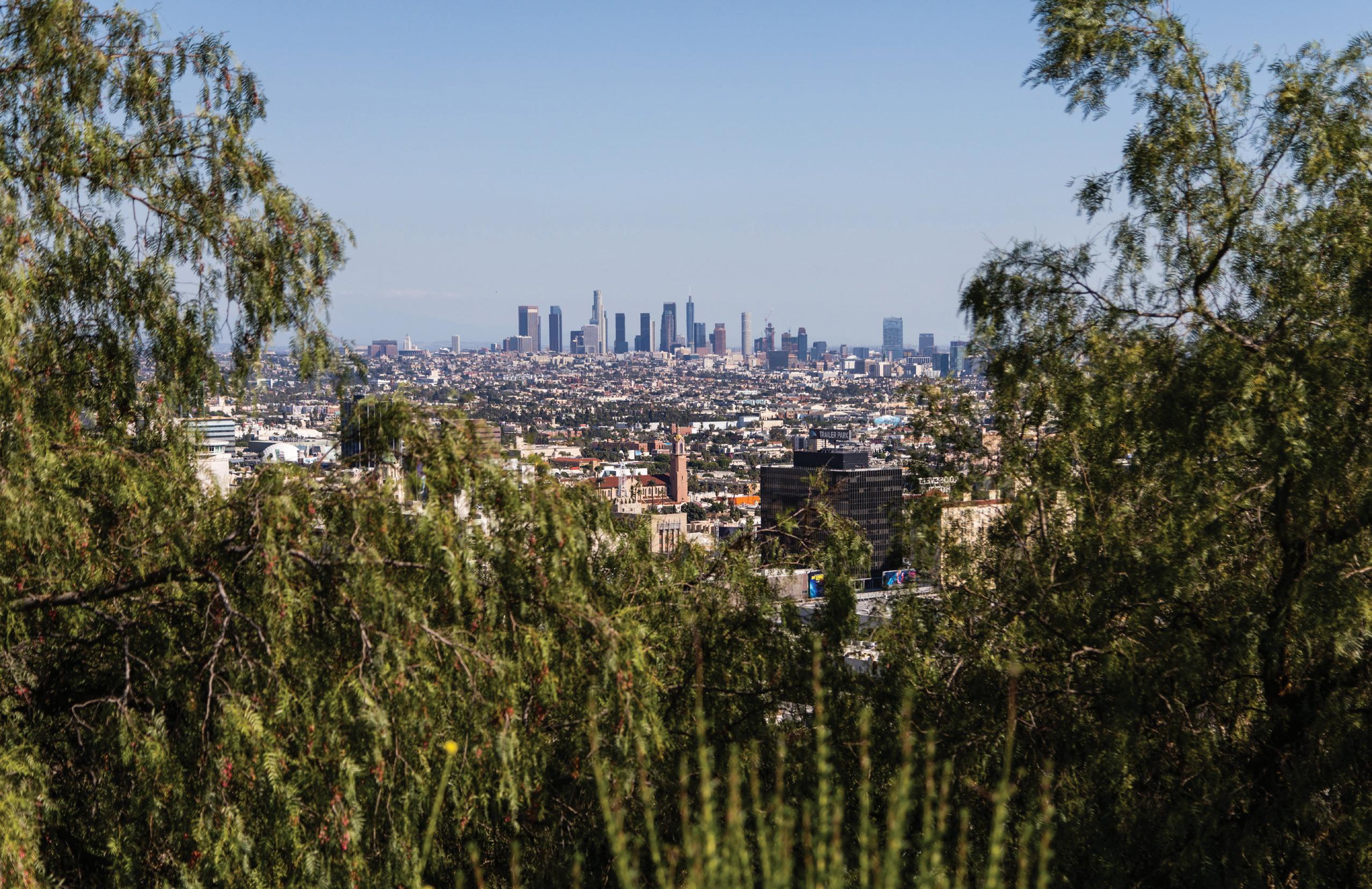
California communities are living on the front lines of the climate crisis. Every year, more extreme and severe wildfires, heat waves, flooding, and droughts make headlines. In the face of such daunting challenges, TPL is restoring hope through the power of nature. We are working together with residents, city and state agencies, Native tribes, and community partners to implement nature-based solutions to the most pressing environmental challenges facing Californians.
TPL’s California Climate Conservation initiative advances natural climate solutions to advance multiple benefits,
from increased public access to the outdoors to protecting and restoring habitat and critical wildlife corridors and advancing water and wildfire resilience. This initiative is setting a new standard for effective and holistic conservation, demonstrating the synergy between nature preservation and community well-being in the face of climate challenges and urban growth.
Nature-based solutions benefit both people and the environment. Natural and agricultural lands absorb carbon dioxide and other greenhouse gases while buffering communities from devastating fires, floods,
and rising seas. They are powerful solutions that address both the causes and effects of climate change— acting as both carbon sinks and natural buffers.
TPL’s Land and People Lab analyze and map landscapes’ recreational, ecological, climate, and cultural assets. Then, we invite residents to augment this data with their own needs and desires for open space. Indigenous

communities and other groups who continue to be marginalized play a central role in the visioning process. This approach helps identify and prioritize which places to protect and maximizes the benefits of our work and your donations. This year, we prepared a groundbreaking study, Pathways to Climate Resilience in California’s Central Coast, to guide strategic, equitable investment in that region.
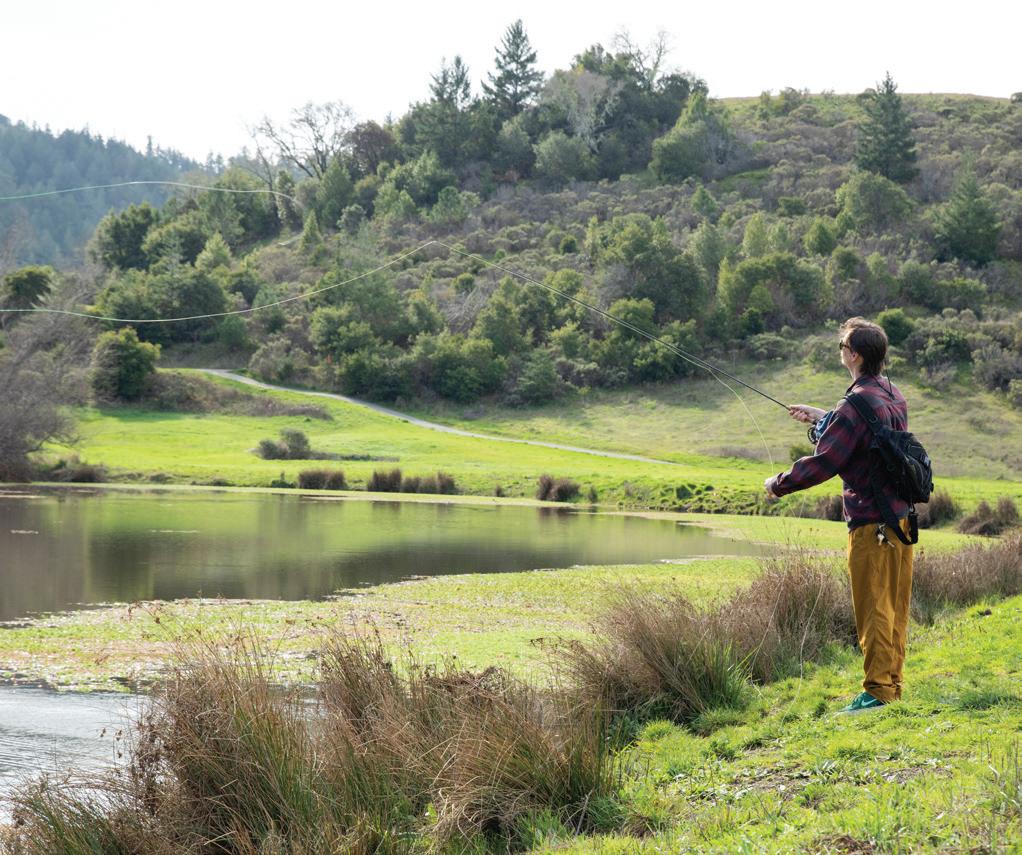
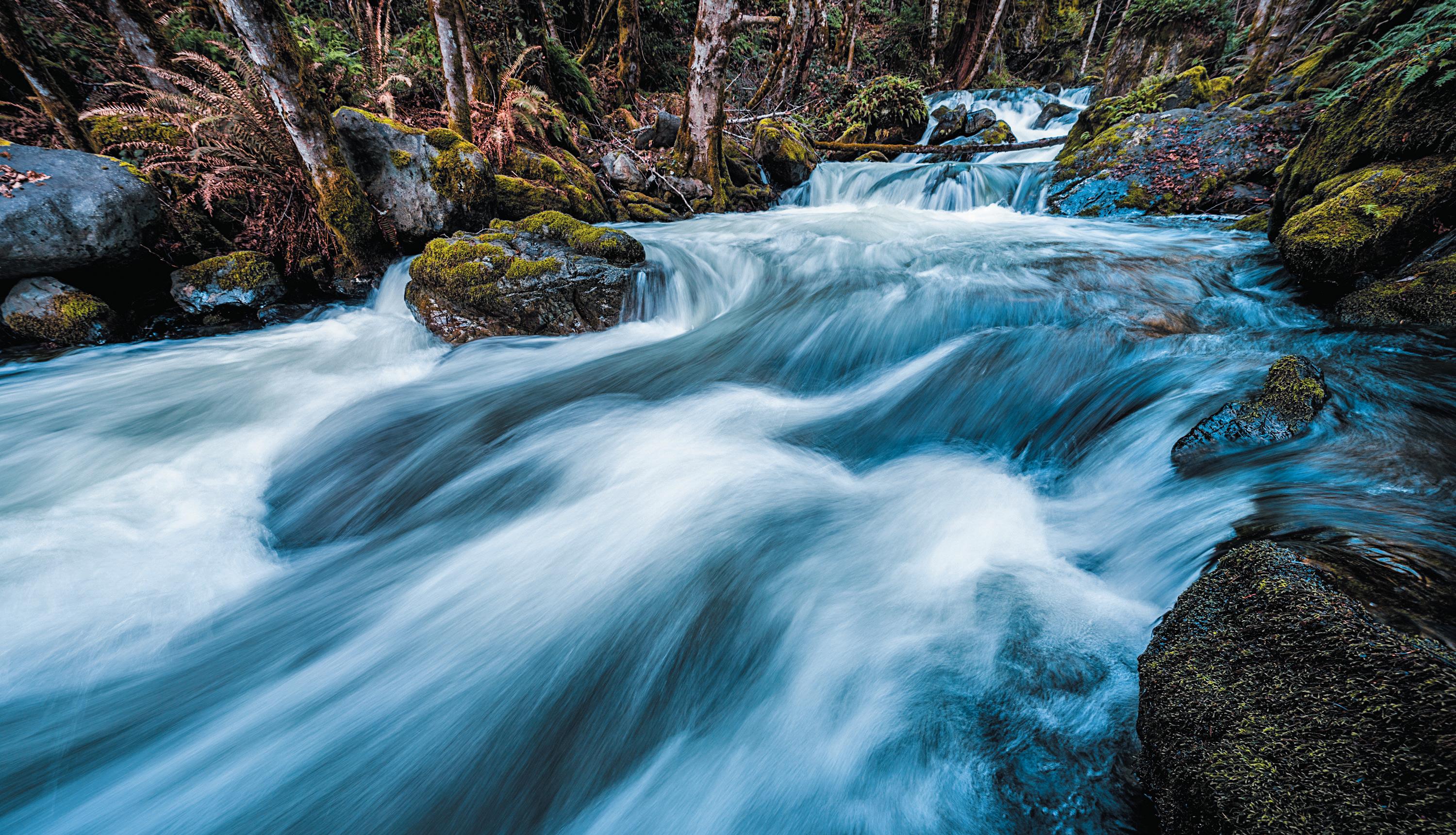
After crafting an open space plan, we act swiftly with tribes, public agencies, and donors like you to protect key landscapes and watersheds. This work is complemented and supported by state agencies, which are mandated to protect 30 percent of the state’s lands and waters by 2030. Over the past year, TPL has preserved 8,157 acres across the state.
Given the critical importance of sustaining water for humans and wildlife, TPL is accelerating the conservation of rivers, wetlands, and other critical water assets across California.
The need for such work has become urgent in recent years as the state navigates the challenges of water management between cycles of severe drought and flooding. However, outdated policies and structural impediments—like impermeable hardscapes in cities and degraded meadows and watersheds in rural areas—limited the state’s ability to capture and redirect stormwater.
This year, TPL protected 1,500 acres around Lake Clementine, located just eight miles from the City of Auburn in the foothills of the Sierra Nevada. The property is adjacent to the Auburn State Recreation Area, an incredibly popular destination receiving over 900,000 visitors annually, and is part of a critical watershed along the American River.
In Marin County, TPL conveyed a struggling 18-hole privately owned golf course to the County of Marin. The 157-acre property, now known locally as San Geronimo Commons , lies within the Lagunitas Creek watershed, home to one of the largest wild coho salmon spawning grounds remaining in the Bay Area. The new public open space benefits more than just wildlife, Marin County is also looking to convert the former clubhouse as a new County Fire Station to provide greater response to the community in West Marin. Residents come here to bike, fish, picnic, and enjoy outdoor events of all kinds. San Geronimo is another example of the creative way TPL is helping to repurpose land to advance California’s climate goals.
Combining scientific analyses with community-sourced information and experience is a powerful idea which can help local and regional planners better meet growth needs while protecting and preserving threatened habitat and biodiversity.”
Chris Wilmers, PhD, Professor of Wildlife Ecology and Conservation at the University of California, Santa Cruz and TPL California Advisory Board member
As climate change exacerbates drought and increases average daily temperatures, our communities face a new reality of longer wildfire seasons and more devastating fires.
Through our Wildfire Resilience program, TPL is creating community-driven plans and funding streams necessary to reduce wildfire risk.
Strategic land conservation can direct development away from fire-prone areas while improving ecological health, watershed protection, and recreational values.
But conserving land is not enough; we must also defend it from wildfires. To this end, we are ensuring that these lands are managed to prevent wildfires by partnering with fire departments, local land trusts, public agencies, and tribal nations, who utilize traditional cultural burning to improve forest health and reduce risks of wildfires to their communities.
This year, TPL helped establish McKinleyville Community Forest , a 600-acre community-owned and managed forest on the edge of McKinleyville, one of the fastestgrowing areas in Humboldt County. Preserving these acres has ended threats from development and expanded opportunities for hiking, horseback riding, and wildlife viewing. It has also uplifted the local economy, enhanced carbon sequestration, and protected the surrounding townships from wildfires through sustainable timber management.
The Central Valley in California—a patchwork of megafarms, rural towns, and booming cities—is one of the most diverse regions in California. But oppressive heat, air pollution, water competition, and limited green spaces are impacting health and quality of life for residents. TPL is leaning on our success in Oakland, Richmond, Los Angeles, and other California cities to improve park equity in the Central Valley.
TPL annually ranks local park systems in the top 100 most populous U.S. cities. In California, the most populous cities in the Central Valley (Bakersfield, Fresno, and Stockton) rank near the bottom. It is time to change the rankings by advancing park equity in California’s Central Valley.
We are beginning in Stockton, whose park system ranks 85th in TPL’s ParkScore® index. This low ranking is largely due to the city’s limited and inequitable investment in parks. On average, communities of color in Stockton have access to 27 percent less park space than those in white neighborhoods.
Our goal is to make Stockton greener and healthier for all. Working with the city, the county health department, and local healthcare providers, our team has gathered data and mapped locations for parks and green spaces with the highest impact on communities. We have also met with grassroots organizations like the Reinvent South Stockton Coalition to gather input on park conditions and barriers to access and use. During these conversations, we learned that residents are concerned about park safety, park quality, and extreme heat.
In 2012, Stockton became the largest city in U.S. history to file for bankruptcy protection, limiting its capacity to invest in public parks. We are partnering with the San Joaquin Community Foundation to apply for a $20 million U.S. Environmental Protection Agency grant to develop new amenities and improve access to three green spaces along waterways in Stockton, including an organic farm and education center operated by the Black Urban Farmers Association; a Delta Aquatic Center operated by the Delta Sculling Center; and a waterway nature path operated by Restore the Delta.
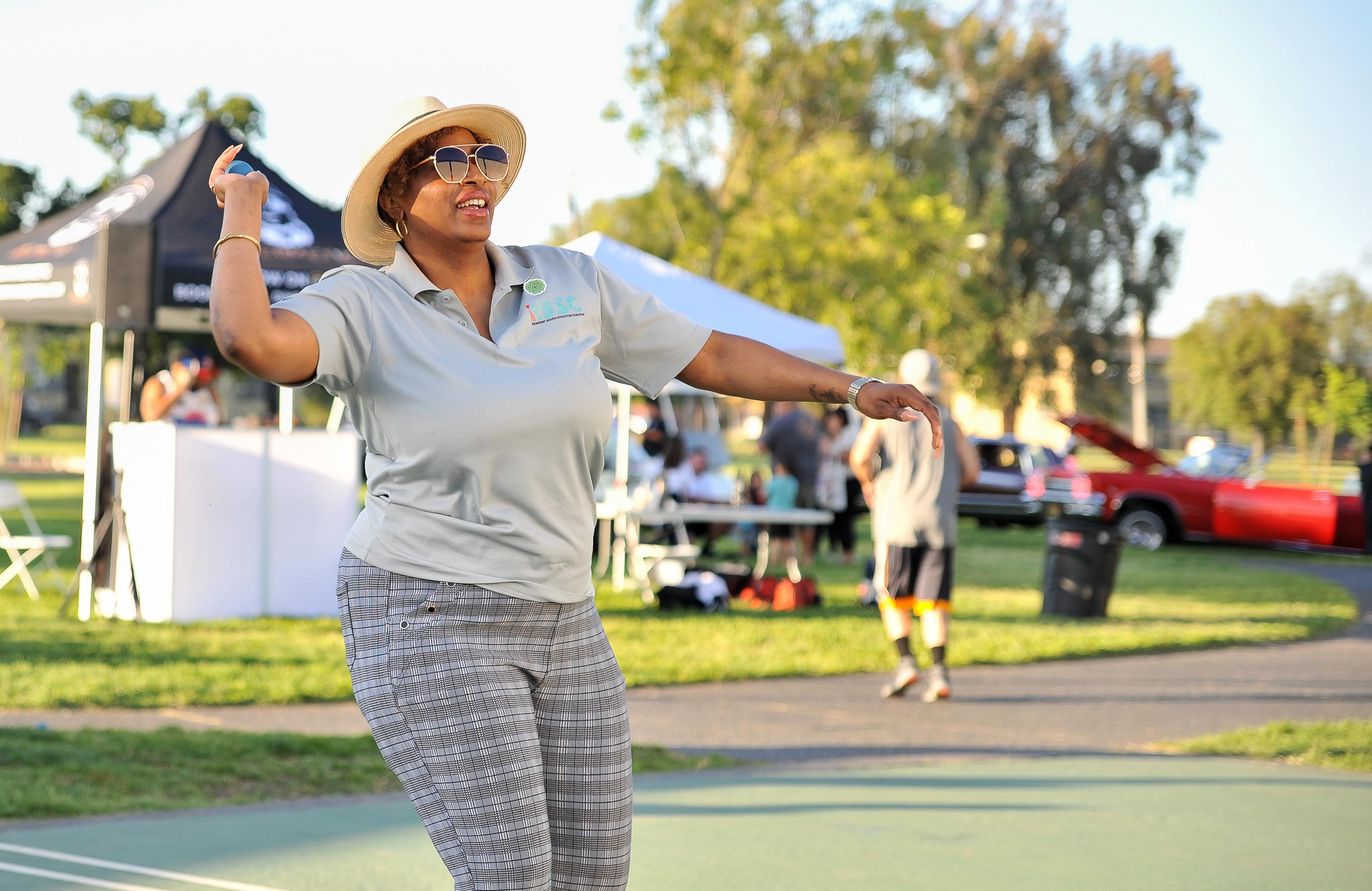
But Stockon is only the beginning of our work in the Central Valley. Our success here will not only improve the lives of Stockton residents but also inspire and guide other valley communities in their efforts
Many schoolyards across the country are paved with asphalt and lack trees and other greenery. These campuses’ bleak conditions adversely affect student health, well-being, and academic performance. Further, only a small percentage of schoolyards are open to the public outside of school hours, despite gaping disparities in park space for people of color and low-income households.
If every schoolyard in California were opened to the public, approximately 6 million residents would gain new close-to-home access to a park. That is why TPL launched the Community Schoolyards® initiative. We are transforming barren campuses into vibrant green spaces with shade trees, outdoor classrooms, learning gardens, and other features that support health, education, and climate resilience. A national leader in the green schoolyard movement, we have transformed over 300 underutilized schoolyards in 23 states. Our goal is to make green schoolyards standard practice across the country.
TPL is working with the Los Angeles and Oakland school districts to achieve districtwide greening and with Sacramento lawmakers to pass new policies to build and maintain green schoolyards more easily and also create the necessary funds to support them.
Castellanos Elementary School serves a predominantly Central American community in the Pico-Union neighborhood of Los Angeles. Roughly half of its students are classified as English-language learners, and over 90 percent qualify for free or reduced-price meals.
Several years ago, the school asked TPL to help transform its bleak, mostly blacktop, schoolyard. Beginning in 2019, TPL staff spent ten weeks visiting Kathia Garcia’s fourth-grade class to reimagine their campus. Students jumped at the opportunity. “When we started working on the project, the students were so excited about the
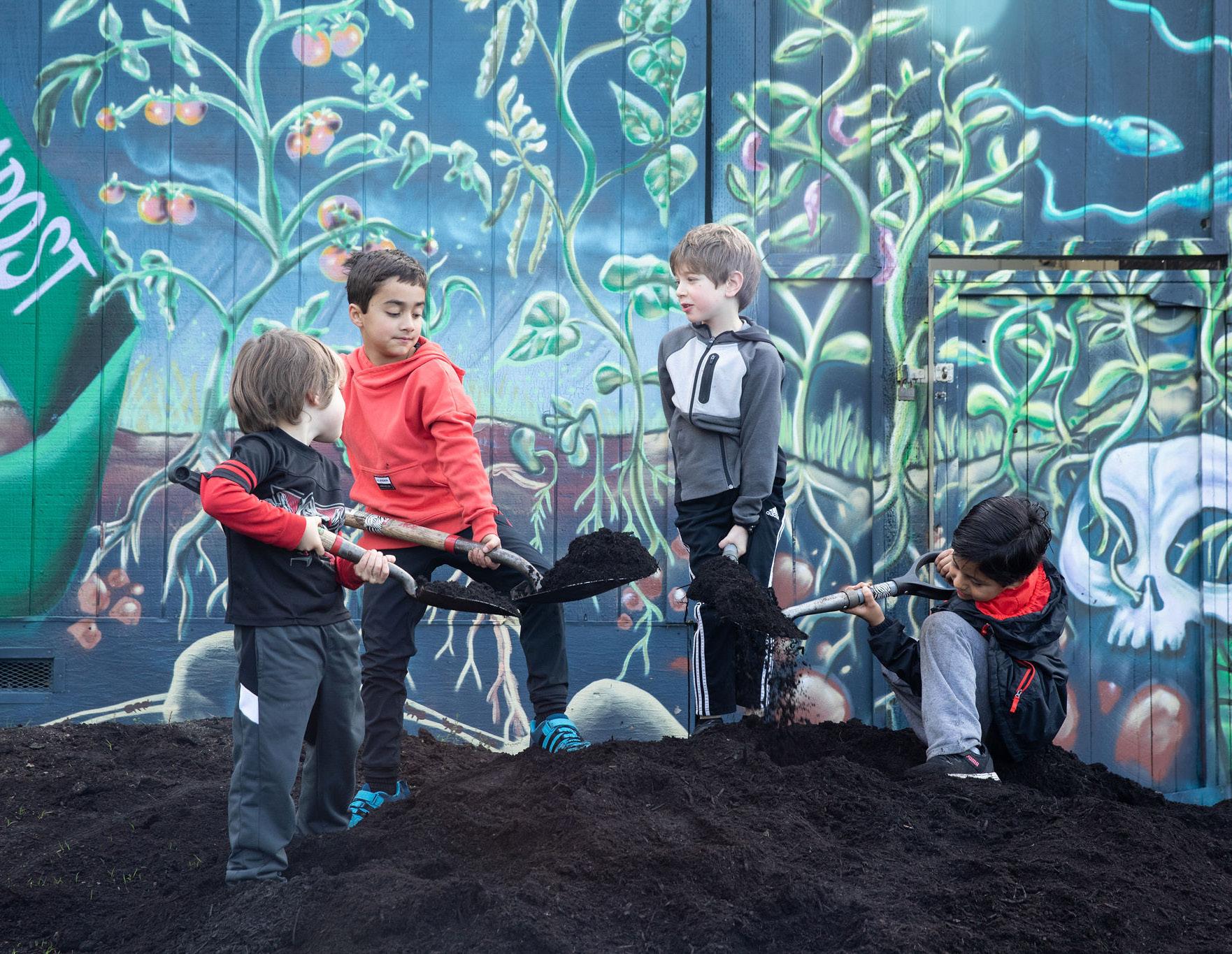
potential that was there,” Ms. Garcia said. “They started seeing things through a different lens—like, what else could be here?”
This January, TPL hosted a joyful opening celebration with students, teachers, and administrators. Large swaths of asphalt have been removed and replaced with 26 new native trees, over 500 native shrubs, and a new play structure and shaded outdoor classroom.
Seeing these vital campus greening projects realized plants a seed of hope that we can create welcoming, sustainable, healthy spaces across our district so that our students and communities can reap the benefits these spaces provide.”
Dr. Rocío Rivas, chair of the Greening Schools and Climate Resilience Committee of the LAUSD Board of Education

Castellanos is part of the Los Angeles “28×28” Green Schoolyards Initiative , a joint effort by TPL and other stakeholders to transform 28 schoolyards in time for the 2028 Olympics in Los Angeles to galvanize support for the green schoolyard movement. Our primary partner is the Los Angeles Unified School District (LAUSD), the second-largest public school district in the country. Unlocking all of the district’s schoolyards would create park access for almost one million Angelenos and cut the city’s park equity gap by more than half. Meanwhile, this year in Oakland, TPL opened its third green schoolyard at Melrose Leadership Academy. As a dual Spanish and English immersion school, the academy welcomes students from all cultures, yet its barren schoolyard was the opposite of hospitable. The renovation added shade trees and native plants that absorb stormwater and keep kids cool on hot days; a
grass turf field, basketball court, and foursquare courts that foster outdoor play; and vegetable gardens and planters that promote nutrition and environmental literacy. By opening all campuses to the public, the Oakland Unified School District (OUSD) could cut Oakland’s park equity gap by 90 percent.
We are pursuing multiple strategies to scale up green schoolyards in California. TPL has cultivated relationships with the superintendents, boards of education, and other leadership in LAUSD and OUSD (and we are building a new partnership with West Contra Costa School District). These relationships have led to the adoption of district policies and design guidelines that accelerate schoolyard transformations.
In Sacramento, TPL is leading a coalition of diverse stakeholders to advocate for state policies and funding for green schoolyards, which garnered a record $150 million allocation in this year’s budget. We were instrumental in the placement of Proposition 2, a $10 billion School Facilities/Education Bond , on the November 2024 ballot and ensuring that green schoolyards are eligible for this funding. One hundred volunteers— including 50 students from Oakland—traveled to Sacramento with TPL to urge representatives to invest in green schoolyards. And the Los Angeles Times editorial board, in response to our convincing case for support, wrote an editorial arguing that the bond should fund green spaces on campus. Now, we are leading a movement to pass this historic measure.
Allowing kids to be exposed to sweltering conditions, whether they are inside the classroom or outside at recess, is unacceptable in a state that calls itself a climate leader.”
Los Angeles Times Editorial: California’s next school bond should include money for grass, trees and green spaces on campuses, June 9, 2024
Indigenous peoples have deep and abiding relationships with their ancestral homelands. Access to these places is essential to culture, sovereignty, and history—and to the physical and spiritual well-being of tribal communities. But many Native Americans have been dispossessed of their lands and lack the resources needed to protect and recover these special places.
TPL’s Tribal and Indigenous Lands initiative seeks to redress historic injustices and restore territories to those whose ancestors inhabited and stewarded these places for generations. We have partnered with more than 100 tribes and Native groups to protect or return over 200,000 acres of homelands and cultural places, such as ancestral burial grounds, fishing sites, and lands that supply traditional foods and medicines.
The Amah Mutsun Tribal Band ’s ancestors, known as Ohlone, are the Indigenous peoples of southern San Francisco and northern Monterey Bay. Since the Spanish robbed the Tribe of their lands and forcibly removed them from their villages, many of their traditions, stories, and histories have been disrupted. In October 2023, TPL signed a groundbreaking partnership agreement with the Amah Mutsun Tribal Band and the Amah Mutsun Land Trust to protect and return lands from which they have been separated since the 18th century. By reclaiming their ancestral lands, the Tribe will advance selfdetermination, revive traditional practices, and resume Indigenous stewardship.
The Potter Valley Tribe is descended from the firstknown inhabitants of Potter Valley in Mendocino County. The Potter Tribe, with TPL’s help, secured a contract to acquire 48 acres of forested ancestral lands. We are raising funds for this purchase and hope to return the property to the Tribe in the coming year.
Palo Escrito Peak lies at the heart of the Esselen People’s ancestral territory in Monterey County. For millennia, the Tribe inhabited and stewarded Carmel Valley’s rich oak woodlands, grasslands, and savanna. During the Mission Period, the Esselen were one of the many tribes forced from their lands into missions. The Tribe is working closely with TPL to restore tribal ownership and access to historic and sacred places, so they can regain sovereignty and resume Native practices. This includes stewarding natural systems in keeping with traditional knowledge and increasing resilience from wildfires and other climate change impacts.
TPL staff provided technical assistance on grant writing for a successful award of nearly $800,000 for nativeplant restoration from the California Wildlife Conservation Board (WCB) to the Tongva Taraxat Paxaavxa Conservancy (TTPC). “This funding from WCB gives us, a Tongva-led land conservancy, an opportunity to start fresh,” said TTPC Land Return Coordinator Samantha Morales Johnson. “This first project with WCB allows us to remove invasive trees and pay Tongva people to remove the understory taking over our oak grove.”
In October 2023, Amah Mutsun Tribal Band and TPL celebrated the signing of the partnership agreement at the California State Capitol Building.
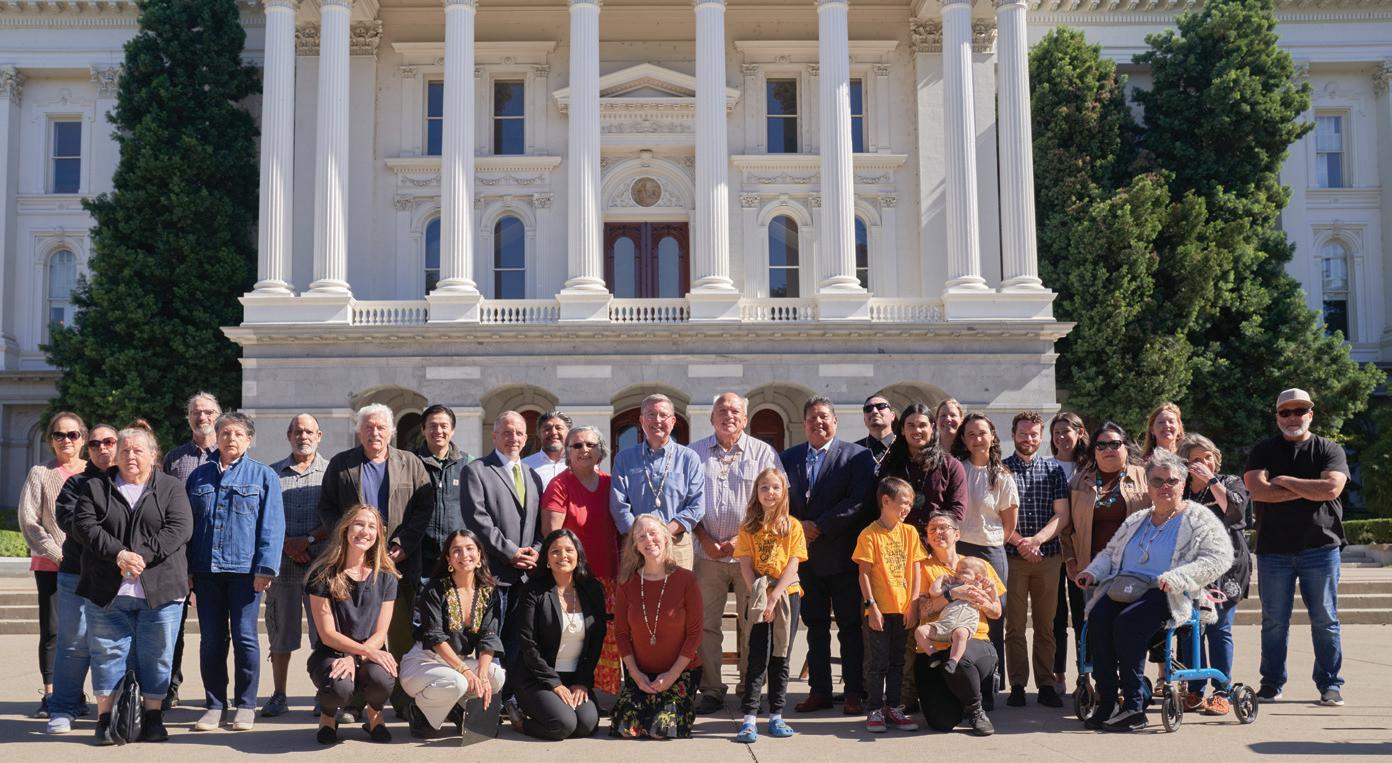
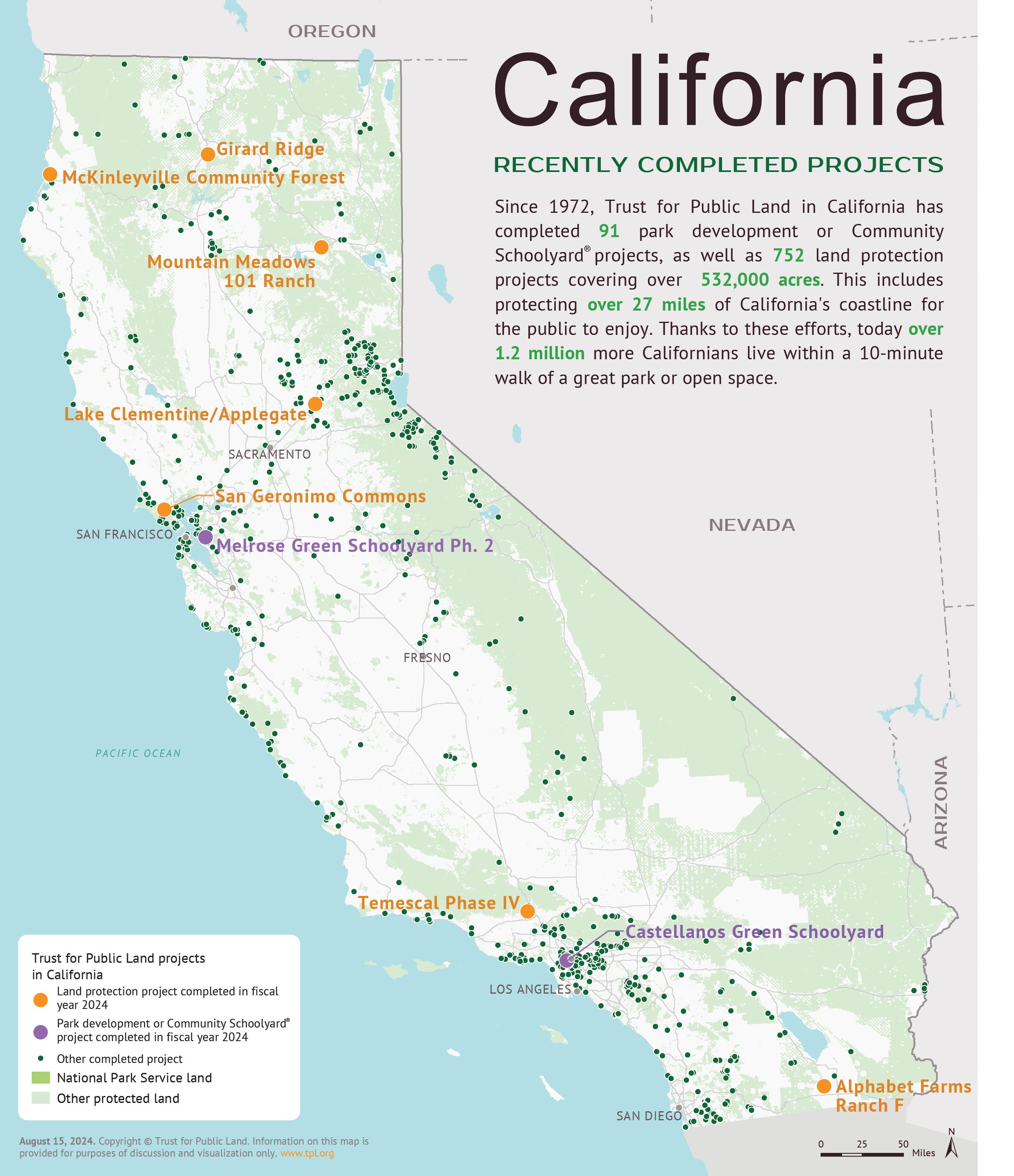
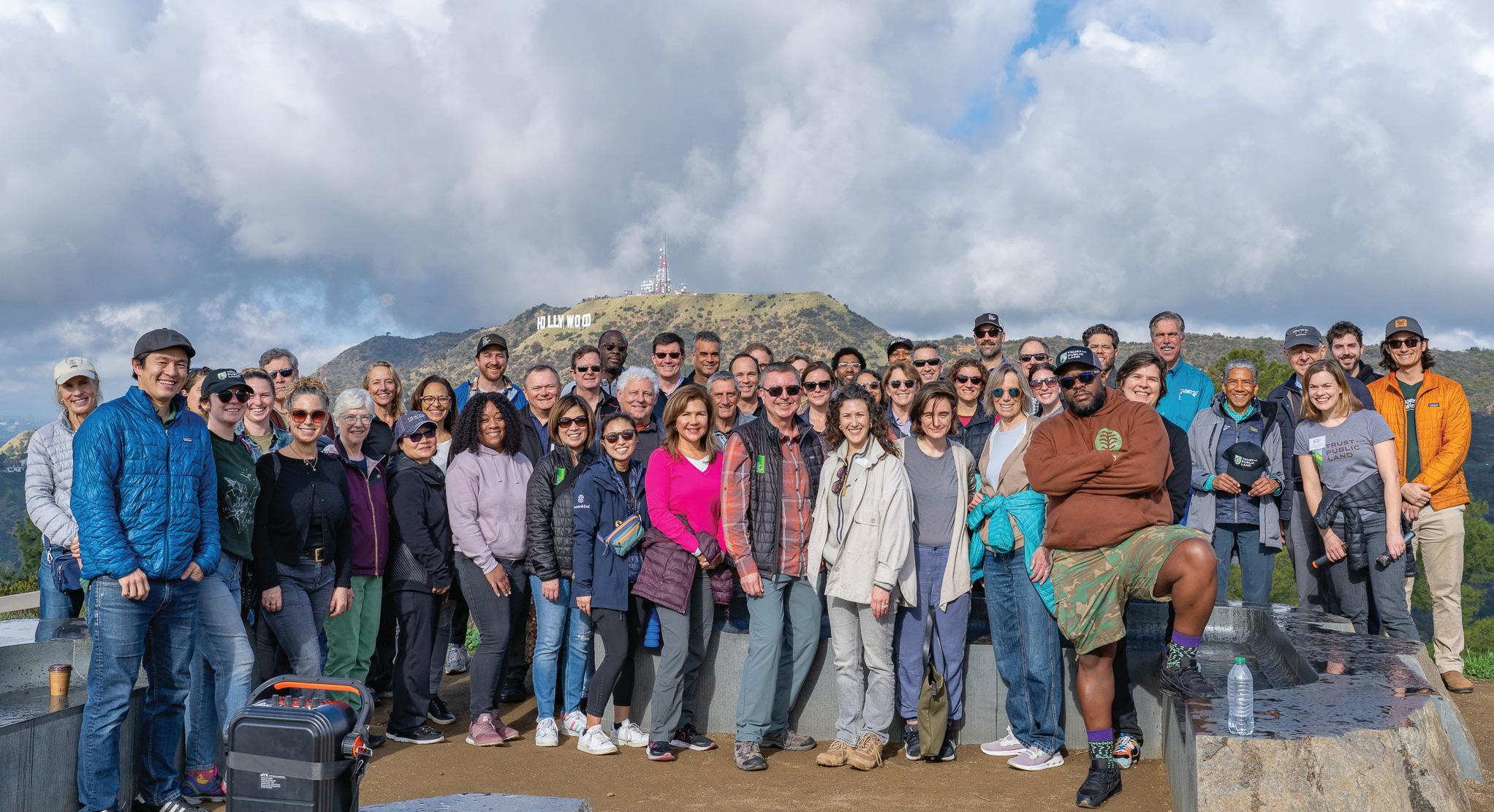
California Advisory Board hike to the Tiffany Overlook with views of Cahuenga Peak in Los Angeles. In 2010, TPL led the campaign to Save the Peak and protect the viewshed of the iconic Hollywood Sign.
BY JOE SORRENTINO/TPL STAFF
We are so grateful for our outstanding volunteers!
Marcia Choo
Val Cole
Lisa Craypo
Kellie Hawkins Davis
Alejandro Esparza
Lucy Finn
Larry Gelb
Shep Harris
Kathryn Welch Howe
Alex M. Johnson
Jane Thornton Jones
Cindy Polite Kamm
Nina Lagpacan
Daniel Martin
Shirley McCrohan
Mandi McKay
Andy Mercy
Shannon Morrissey
Julie Parish
Michael Parish
Desirée Portillo Rabinov
Daniel Rosenfeld
Laura Shell
Vanessa Smith
Bob Valliere
Francesca Vietor
Trina Villanueva
Chris Wilmers
Ward Wolff
Join us
Help ensure everyone has access to the outdoors. Every park we create, schoolyard we transform, trail we extend, and landscape we protect is thanks to supporters like you. tpl.org/donate/ca
Nicole Brown, California Director of Philanthropy nicole.brown@tpl.org
Dede Devlin, Institutional Giving Director dede.devlin@tpl.org

Guillermo Rodriguez, Vice President, Pacific Region guillermo.rodriguez@tpl.org
23 Geary St., Suite 1000, San Francisco, CA 94108